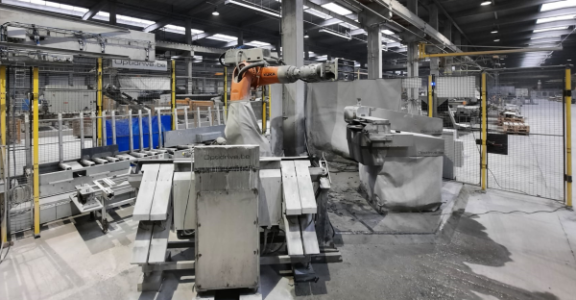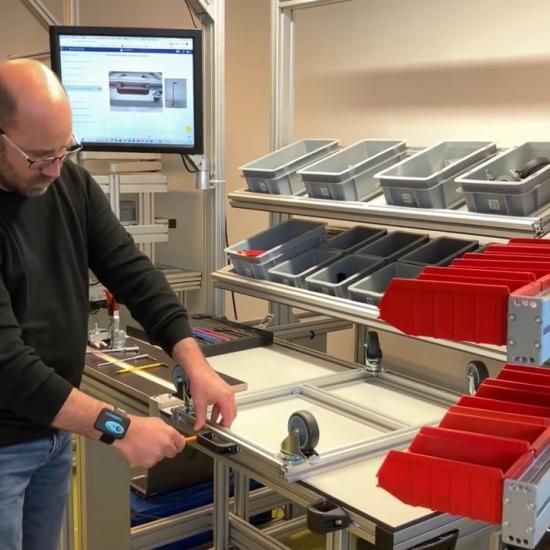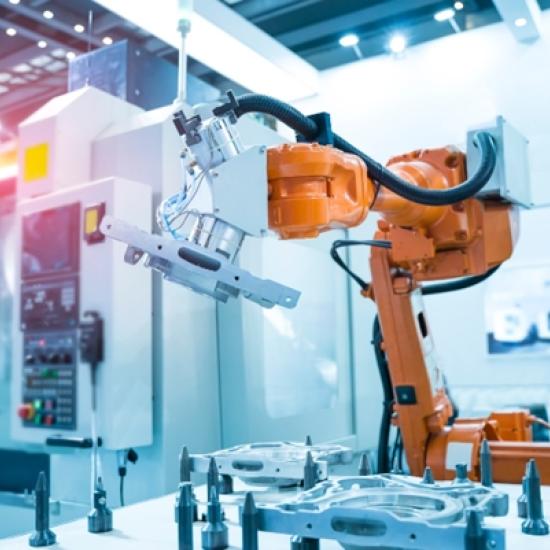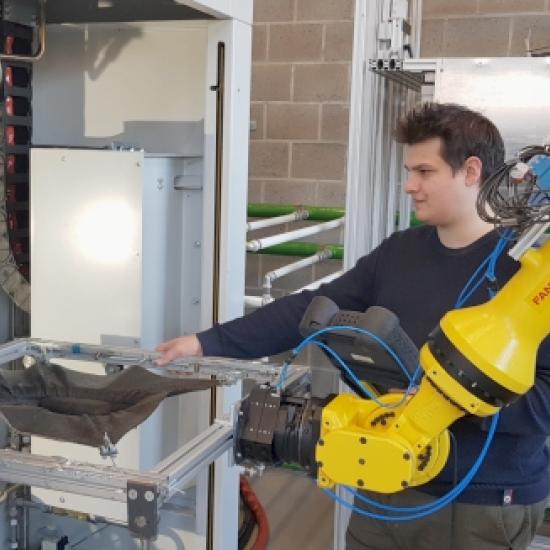Many manufacturing companies have already focused on automation and digitisation to some extent, but this has often been done in isolation and in different ways. Little communication takes place between these islands and little is known about the material, or the information, that goes from one set-up to another. Keeping a production line flexible and profitable is a serious challenge. This is also the case with Renier Natuursteen.
By combining the data from the different islands, production can be made more transparent and a 'smart factory' realised. This also makes it possible to see what happens during the intermediate transport.
Tracking pallets
Renier Natuursteen quarries decorative stone and processes it into finished products for the construction sector. The family business specialises in processing Belgian bluestone. The company recently undertook some changes to address this problem. For example, two Optidrive robot setups on the site were connected further and exchanged data with a local platform. This was implemented using components of the open-source FIWARE platform. This made it possible to track the pallets between the automation setups without having to make the pallet intelligent. The pallets were given a QR code, which allows a pallet dashboard to be consulted.
The implementation involved connecting the robot cells to the FIWARE Industrial Internet of Things (IIoT) platform. Dashboards were then set up for the operators and production managers. The dashboard of each pallet could then be consulted via QR codes. All pallet operations were recorded in a database, from which the history and progress are mapped-out. This data was also linked to Renier Natuursteen's ERP system.
Limited cost
Apart from some software changes, this is a low-cost intervention, but its benefits should certainly not be underestimated. It has made production very transparent: people now know which pieces are on each pallet, where they have been and also where they have to go. It has also become possible to determine from this data how efficient the production is and you immediately know when a part shows a defect. Knowing the status of production at all times allows corrective action to be taken, resulting in improved productivity and efficiency.
Casebook 'Connected manufacturing'
On a 'transparent' factory floor, people know what is happening and why based on (real-time) production information. This allows targeted decisions to be made to optimise production by reducing lead times or by raising quality to improve competitiveness and productivity. Connecting production equipment with IT such as ERP or other systems is crucial for obtaining a transparent factory floor.
|
To inform and inspire you, Sirris and Flanders Make have put together a casebook on connected manufacturing. In this document, we take a closer look at various business cases, including that of Renier Natuursteen. You can request it here for free. |




